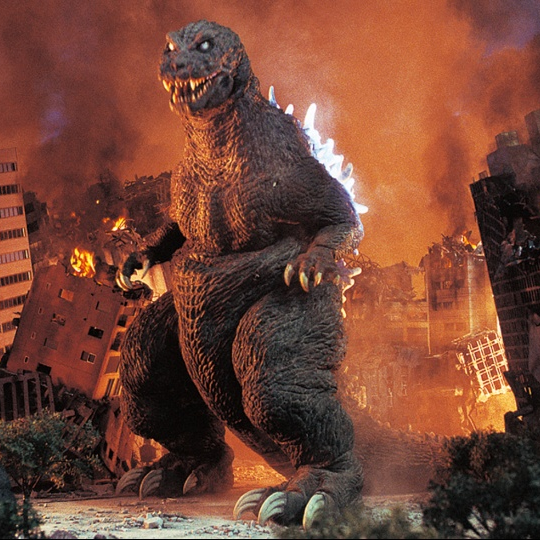Among all versions of Godzilla, none is more terrifying or malevolent than Godzilla Oni — the incarnation seen in Godzilla, Mothra and King Ghidorah: Giant Monsters All-Out Attack (2001).
Unlike other interpretations, this Godzilla is not a mere creature of nature or nuclear mutation, but a supernatural entity, inhabited by the restless souls of those who perished in the Pacific Theater during World War II.
Driven by vengeance, this Godzilla rises to punish Japan for forgetting its past — unleashing destruction upon its cities as divine retribution.
We can clearly see this throughout the movie: where Godzilla’s attack generates a mushroom-shaped explosion, to the climactic battles where the monster annihilates Baragon, Mothra, and King Ghidorah in devastating bursts of energy, And when it tears through buildings, tanks, fighter jets, and entire warships with a single strike, Godzilla Oni showcases a level of power that goes far beyond biology — it’s pure, vengeful energy given monstrous form.
Every movement, every blast, feels less like physics and more like a wrathful spirit rewriting the laws of nature. This version of Godzilla isn’t just destruction incarnate — it’s judgment made flesh.
Godzilla Destroys Kaijus
This method allows us to use official data and significantly reduce the number of variables we have to assume.
For this estimation, we’ll consider the following points:
1️⃣ The body of the kaiju we’ll use is King Ghidorah, who in the film has an official mass of 25,000 tons.
2️⃣ To calculate the energy required for the destruction of the body, we’ll use the vaporization of the water content within the kaiju’s body. On average, water represents about 60% of a biological organism’s mass. When a sudden and extreme temperature change converts that water into vapor, the rapid expansion of steam and internal gases causes the body to violently explode.
With those points defined, all that remains is to perform the calculation. For the estimate we need the following data:
Specific heat capacity of water (c): 4,181 J/(kg·K)Now the steps and results:
- Sensible heat to raise water from 20°C to 100°C
- Latent heat to vaporize that water
- Total energy (sensible + latent)
The atomic breath destroys the body in about five seconds of continuous firing, so the energy transmitted during that burst is roughly 1.8 kilotons of TNT — a staggering output, more than enough to annihilate any kaiju it faces.
Godzilla Oni’s atomic breath isn’t just a weapon — it’s an embodiment of supernatural vengeance channeled through pure destructive energy. Delivering over 1.8 kilotons of TNT in a matter of seconds, this version of Godzilla demonstrates not only immense physical power but also a terrifying blend of myth and physics, where spiritual wrath manifests as thermal annihilation.








0 Comments